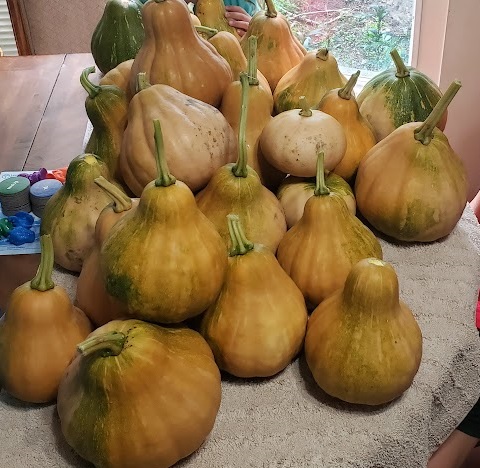Mulberries are incredibly delicious, however, the fruit are easily damaged so you rarely see them available in stores. The trees are drought tolerant and require little fertilizer. They are prolific growers sprouting new trees from cuttings easily. There are many different varieties and colors that grow in most climates including varieties that don’t make fruit. Many communities favored the fruitless varieties because the fruit can stain sidewalks.
Pros of Mulberry Trees
 Fertilizer and water input are unnecessary, but it does respond well to them with flourishing growth and new fruit.
Fertilizer and water input are unnecessary, but it does respond well to them with flourishing growth and new fruit.- Eventually will be a large shade tree, Shangri la has very large and beautiful leaves.
- Everbearing versions bear fruit year round, including in winter.
Mulberry Tree Uses
Most often the fruit is eaten out of hand and is very delicious. Shangri La makes very large fruit from April to early summer. Everbearing types provides a bit of food security by providing a year round food source. Pies, jams, and jellies could be made from excess fruits. I imagine they would freeze well and could go great in smoothies. Essentially anywhere you would use a blackberry.
Mulberry research(there is a lot) has recently stated that mulberries have more antioxidants than blueberries and even cranberries. Why not get those antioxidants for free from your backyard!?
Personal Experience
Our original mulberry tree (Shangri La) now has a trunk diameter of about 4 inches after 3 years of growth. It seems to look dead during the winter, loosing all of its leaves, and then come back vigorously, producing its large fruit on the new growth in the spring.
seems to look dead during the winter, loosing all of its leaves, and then come back vigorously, producing its large fruit on the new growth in the spring.
I recently found a Florida Everbearing Mulberry tree and it has been providing 6-7 ripe fruit every day since planting which the kids readily gobble up. I intentionally planted this one right next to their playground so they will always be able to reach a yummy treat and will one day have the shade provided by the tree.
The green berries taste like broccoli, but I have read reports that the unripe fruit is hallucinogenic . . . oops.
Propagation of Mulberry Trees
Cuttings- Successful with Shangri La variety(except for the ones our neighbors rogue horse ate . . .), in progress with everbearing variety.
Seeds – I have ordered some seeds from the internet, but they are not the Everbearing variety so I do not think I am going to try to sprout them.
Future Plans
I would like to propagate another 2-3 of the Everbearing Variety for future shade and fruit production. I will only provide fertilizer and water to the one by the playground. The others will grow a little slower but will provide food security nonetheless.
Cons of Mulberry Trees
 May Stain driveways and sidewalks
May Stain driveways and sidewalks- Unripe fruit may be hallucinogenic
- Shangri La is a bit ugly in the winter (no leaves) – could be an advantage if planted near a house and you want the sun to heat your house in the winter, but you want the shade of the tree to keep your house cool in the summer.
Conclusion
This is a go to tree for any food forest or permaculture enthusiast. 5 out ot 5 stars for the lack of care needed and the food security provided by the everbearing variety. Explore other fruit trees for a food forest.







